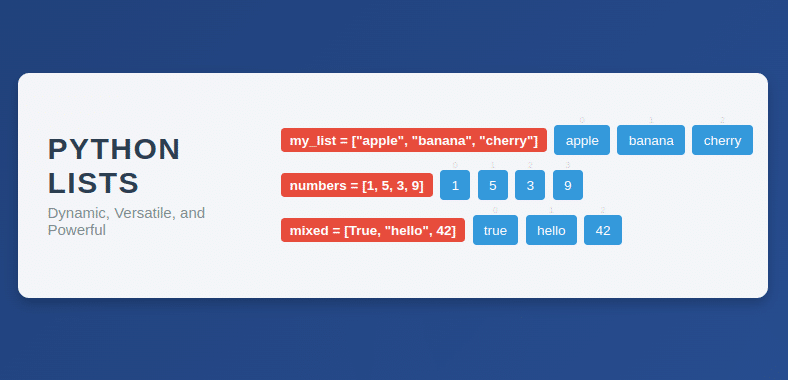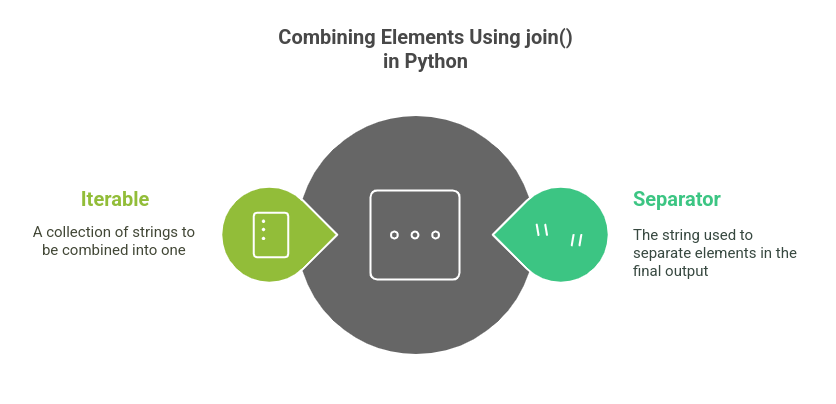- How to use the Python Enumerate Function?
- What is the syntax of the Python Enumerate Function?
- How to use Python Enumerate Function with examples?
- What is the return value of the Python Enumerate Function?
- How to unpack and use the return value of the Python Enumerate Function?
- What is the Return Value of Python Enumerate?
- Examples of using Python Enumerate
- FAQs
Python Enumerate
Imagine you’re walking through a crowded marketplace, trying to count the number of people wearing red hats. Keeping track of the count while scanning the crowd is challenging. Similarly, when working with Python, there are situations where we need to keep track of both the index and the corresponding value while iterating over a sequence. That’s where Python’s enumerate function comes to the rescue!
In this article, we’ll be discussing everything you need to know about Python enumerate – from its definition, syntax, usage, and return value to its examples.
What is Python Enumerate Function, and why is it important?
What is Python Enumerate Function?
The Python Enumerate Function is a built-in function in Python that adds a counter to an iterable object and returns an enumerate object. The enumerate function can be used directly for loops to keep track of the iteration of the loop. It is a useful tool when working with lists, strings, and other iterable objects.
Why is Python Enumerate Function important?
The Python Enumerate Function is essential because it simplifies the iteration process; adding a counter to an iterable offers a simple way of tracking the progress of a loop. This function is a built-in function in Python, which means it’s readily available for use and can streamline development processes.
What does the enumerate object return?
The enumerate object returns a tuple containing a counter and the value obtained from iterating over an iterable. By default, the counter starts at 0, but developers can set it to any other value as well.
How to use the Python Enumerate Function?
Python is a popular programming language used in a lot of different fields, such as data science, web development, automation, and more. The enumerate function in Python is one of the built-in functions that come in handy when working with loops and iterables. In this article, we will go through exactly what the Python Enumerate Function is, its syntax, how to use it with examples, and unpack its return value.
What is the syntax of the Python Enumerate Function?
What is the syntax of the Python Enumerate Function?
The syntax of enumerate is straightforward. The function takes an iterable object as its argument and returns an enumerate object. The general syntax is as follows:
enumerate(iterable, start = 0)
Where iterable is the object to be iterated over, and start is the starting index value.
What is an enumerate object, and how to use it?
As mentioned earlier, the enumerate function returns an enumerate object, which is an iterator in Python. We can use this object to iterate over the elements of an iterable. Here’s an example of how to use an enumerate object to loop through a list:
enumerate_obj = enumerate(iterable) for index, value in enumerate_obj: # Do something with index and value
How to use Python Enumerate Function with examples?
The simplest and most common way to use the enumerate function is to loop over the iterable object, as shown in the example below:
for index, value in enumerate(iterable):
# Do something with index and value
In this example, the index represents the current index of the iterable object, and the value represents the current value of the iterable object.
How to use Python Enumerate Function to specify a different starting index value?
You can use Python Enumerate Function to specify a different starting index value by adding the second parameter.
my_list = ['apple,' 'banana,' 'cherry,' 'date'] for index, item in enumerate(my_list, start=1): print(index, item) The output will show the following: 1 apple 2 banana 3 cherry 4 date
What is the return value of the Python Enumerate Function?
What is the return value of the Python Enumerate Function when iterating over a list?
When iterating over a list, the Python Enumerate Function returns a list of tuples. Each tuple contains the index and iterable object value that was returned during the iteration. The output of the Python enumerate function that iterates over a list can be used as below:
my_list = ['apple,' 'banana,' 'cherry,' 'date'] print(list(enumerate(my_list))) This will output: [(0, 'apple'), (1, 'banana'), (2, 'cherry'), (3, 'date')]
What is the return value of the Python Enumerate Function when iterating over a string?
Similarly, when iterating over a string, the Python Enumerate Function returns tuples of integers as the index and the corresponding character in the string. The output of the Python enumerate function that iterates over a string can be used as below:
my_string = "Hello World" print(list(enumerate(my_string))) The output will show the following: [(0, 'H'), (1, 'e'), (2, 'l'), (3, 'l'), (4, 'o'), (5,''), (6, 'W'), (7, 'o'), (8, 'r'), (9, 'l'), (10, 'd')]
How to unpack and use the return value of the Python Enumerate Function?
How to use a tuple containing the index and iterable object?
To unpack and use the return value of the Python Enumerate Function, we can convert it to a list of tuples. We can access each item in the tuple as follows:
my_list = ['apple,' 'banana,' 'cherry,' 'date'] for index, item in enumerate(my_list): print(index, item) The output will be: 0 apple 1 banana 2 cherry 3 date
How to use keyword parameters to simplify the iteration process?
You can use the keyword parameter to simplify the iteration process by omitting the tuple unpacking. This is achieved by passing the return value of the Python Enumerate Function to the list function.
my_list = ['apple,' 'banana,' 'cherry,' 'date'] print(list(enumerate(my_list))) This will output: [(0, 'apple'), (1, 'banana'), (2, 'cherry'), (3, 'date')]
What is the parameter of Python Enumerate?
The parameter of Python enumerate the iterable object that is to be looped over. Additionally, the function takes an optional parameter – start, which allows developers to set the starting index value. If the start parameter is not provided, the default value is 0.
What is the Return Value of Python Enumerate?
How does the Python Enumerate function work on iterable objects?
The Python enumerate function works by iterating through each element of an iterable object and returning a tuple of the current index and value of the element. The function also gives developers control over the starting index value.
What is the use of starting index in Python Enumerate?
The starting index value allows developers to determine from which index the enumeration starts. By default, the starting index value is 0, but developers can set it to any other value that they prefer.
Examples of using Python Enumerate
How to use Python enumerate to loop through a list of tuples?
Let’s consider a simple example of using Python enumerate to loop through a list of tuples:
lst = [('a', 1), ('b', 2), ('c', 3)]
for index, tup in enumerate(lst):
print(index, tup)
In this example, the output will be:
0 ('a', 1)
1 ('b', 2)
2 ('c', 3)
How to use Python enumerate to iterate through a string?
Enumeration can also be used to iterate through a string. Here’s an example:
string = "Python Enumerate" for index, char in enumerate(string): print(index, char) In this example, the output will be: 0 P 1 y 2 t 3 h 4 o 5 n 6 7 E 8 n 9 u 10 m 11 e
What is an example of using Python enumerate to iterate through a list?
Here’s an example of using Python enumerate to iterate through a list:
lst = ['apple', 'banana', 'orange']
for index, value in enumerate(lst):
print(f"The index value is {index} and the fruit is {value}")
In this example, the output will be:
The index value is 0, and the fruit is an apple
The index value is 1, and the fruit is banana
The index value is 2, and the fruit is orange
Here are some interesting facts about Python’s enumerate function:
- Enhanced Iteration: The enumerate function enhances the iteration process by providing a built-in mechanism to access both the index and the value of each element in an iterable object.
- Tuple Unpacking: The enumerate function returns tuples of the form (index, value) for each element in the iterable. This allows us to conveniently unpack the tuples into separate variables, simplifying our code.
- Default Start Index: By default, the enumerate function starts the index from 0. However, you can specify a different starting index by passing it as the optional start parameter.
- Efficient Memory Usage: enumerate returns an iterator rather than creating a new list. This makes it memory-efficient, especially when dealing with large datasets or long sequences.
- Flexibility with Iterables: The enumerate function can be used with a wide range of iterable objects, including lists, tuples, strings, dictionaries, and even custom-defined classes that implement the iterable protocol.
- Readable and Concise Code: By using enumerate, we can write more readable and concise code compared to manually managing index variables. It reduces the chances of off-by-one errors and enhances code clarity.
- Dual Perspective: enumerate provides the unique advantage of dual Perspective. It allows us to simultaneously access the index and value of each element, enabling us to perform tasks that require insights from both aspects.
- Loop Control: The enumerate function can be combined with other control flow statements, such as break and continue to manipulate the iteration process based on specific conditions.
- Versatile Applications: enumerate finds applications in various scenarios, including data processing, algorithm design, list comprehension, finding element positions, and more.
- Pythonic Idiom: Using enumerate is considered a Pythonic idiom, emphasizing the language’s focus on readability, simplicity, and expressive code.
Conclusion
Python’s enumerate function is like a trustworthy sidekick that adds indexing superpowers to your iterations. It simplifies code, improves readability, and saves you from the hassle of manually tracking indices. So, the next time you need to enumerate over a sequence.
FAQs
A: Enumerate is a built-in function in Python that takes an iterable and returns an object called an iterator. This object can then be used directly for loops or converted into a list of tuples using the list() notation.
A: The syntax of enumerate() is: enumerate(iterable, start=0). The first parameter, iterable, is the object that you want to loop over. The second parameter, start, is optional and specifies the starting index of the enumeration.
A: An iterable in Python is any object that can be looped over. Examples of tables include strings, lists, tuples, and dictionaries.
A: To use enumerate in a for loop, you can simply pass the iterable to the enumerate() function and use the returned iterator in the for loop. For example: for index, value in enumerate(iterable):
A: A list in Python is a mutable object, meaning that it can be modified after it is created. A tuple, on the other hand, is an immutable object, meaning that it cannot be modified after it is created.
A: There are several ways to loop over an iterable in Python, including using a for loop, a while loop, or an iterator. One common method is to use a for loop with the in keyword, like this: for item in iterable:
A: An iterator in Python is an object that implements the iterator protocol, which consists of the __iter__() and __next__() methods. Iterators allow us to loop over something without having to know the underlying data structure.
A: To convert an iterator into a list in Python, you can use the list() function. For example, if you have an iterator named “my_iterator,” you can convert it into a list by calling list(my_iterator).
A: Using enumerate in a for loop allows us to loop over an iterable and, at the same time, keep track of the index of the current item. Using a counter variable, on the other hand, requires us to manually increment the variable inside the loop and keep track of the index ourselves.
A: You can start enumerate at a different number by passing a value for the “start” parameter. For example, if you want to start at 1 instead of 0, you can use enumerate(iterable, start=1).






